Balance Exercises for Older Adults At Home
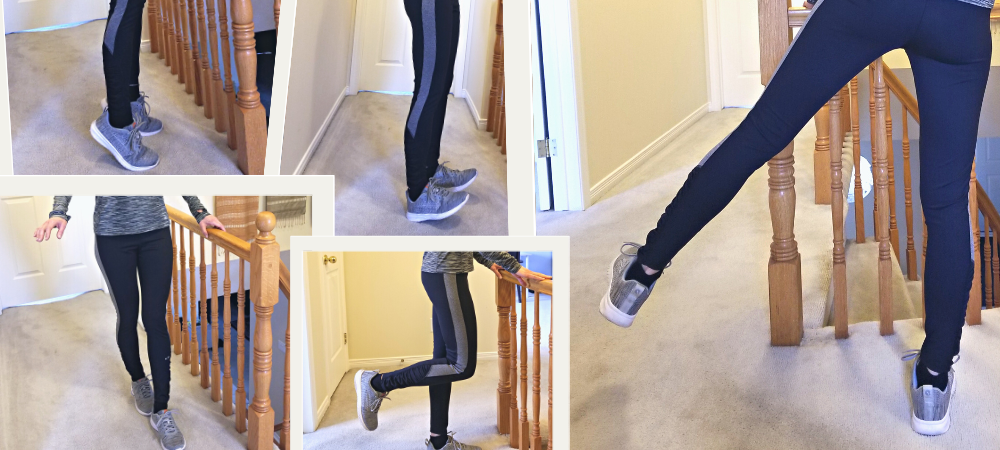
Falls are the leading cause of injury-related hospitalizations for Canadian adults over the age of 65. Aging can lead to decreased balance, changes in vision, joint stiffness and decreased muscle strength, all of which can increase the risk of falls.
Exercises that specifically challenge your balance can improve your stability and coordination, lower your fall risk and help you stay active and independent as you age. Not all exercises are right for everyone. Always speak to your physiotherapist or health care provider before starting any home exercise program.
Tips for getting started with balance exercises as an older adult
- Wear supportive footwear and comfortable clothing.
- Make sure that your exercise space has good lighting and is free from tripping hazards like cords, rugs or clutter.
- Exercises should be done with a stable support to hold onto such as a railing or a counter. Use both hands to start and then gradually progress to holding on with one hand, then a single finger and then try just touching your finger on the counter occasionally. This will allow you to gradually and safely challenge your balance.
- Perform exercises slowly.
- Gradually increase repetitions as you gain strength, balance and stamina.
- Be careful. Because you are challenging your balance, ensure that you feel safe. This might mean placing a chair behind you, or having a helper with you to supervise.
- If you feel dizzy, light-headed or experience any pain or shortness of breath, stop immediately and talk to your doctor.
Balance exercises to try
Standing with feet together
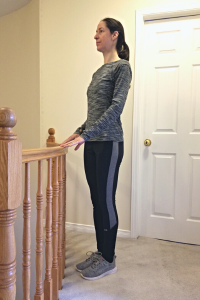
- Stand with your hands on the counter. Stand tall.
- Place your feet as close together as possible.
- Hold for 10 seconds.
- To challenge yourself, only hold the counter with one finger or hover your hands above the counter.
- You can also progress this exercise by turning your head or moving your eyes.
Heel raises and toe lifts
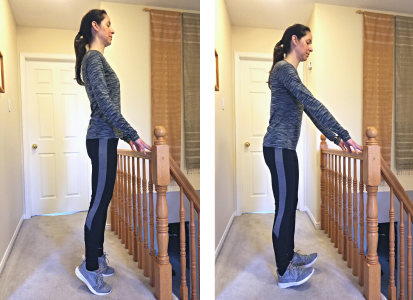
- Hold onto the counter with your feet shoulder-width apart. Stand tall.
- Lift your heels up off the ground. Repeat ten times.
- Then lift your toes of the ground. Repeat 10 times.
- To challenge yourself, rock back and forth first lifting your heels then your toes. Repeat 10 times.
Side leg raise
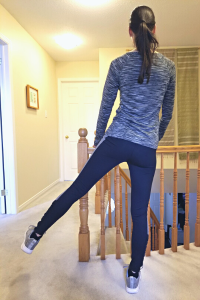
- Hold onto the counter with your feet hip-width apart. Stand tall.
- Slowly lift your right leg out to the side, toes pointing forward. Keep your back and right leg straight.
- Lower your right leg slowly back to the ground.
- Repeat ten times, then switch to the left leg.
- To challenge yourself, only hold the counter with one finger or hover your hands above the counter.
Single leg stance
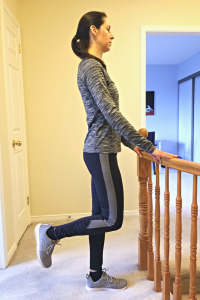
- Stand with your hands on the counter. Stand tall.
- Shift your weight into your left foot and slowly lift your right foot off the floor.
- Try to hold for ten seconds, then slowly lower your foot to the floor.
- Repeat this movement three times on each side.
- If you want to challenge yourself, you can progress to taking your hands off the counter, extending your arms out to the side or lifting your hands over your head.
Tandem walks
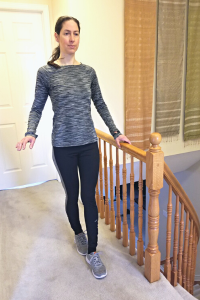
- Stand beside the counter. Stand tall.
- Step your right foot in front of your left so that the heel of your right foot is just touching the top of the toes on your left foot, like you are walking on a tightrope.
- Step your left foot in front of your right.
- Continue walking slowly like this for 5-10 steps, depending on your space.
- If this is too challenging, you can take wider steps.
- To challenge yourself, try looking to the right then left as you walk.
Making balance exercises a regular part of your routine can help you stay physically active, increase your confidence and reduce your fear of falling. Along with its physical benefits, balance exercises have also been shown to improve memory and spatial cognition in older adults. Always speak to a doctor if there are any changes in your health or medications that could impact your balance.
A VHA physiotherapist can help you modify these balance exercises depending on your mobility or can recommend the exercises that would be best for you. Contact VHA’s Enterprise Health Solutions team at 416-489-2500 ext. 4649 or by email at ehs@vha.ca for more information.
Exercises reviewed and demonstrated by: Audrey Letouze, Registered Physiotherapist
If you enjoyed this article, you may also like to read:
